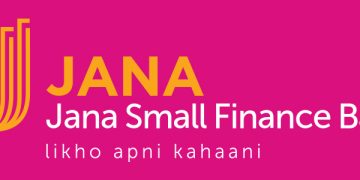Blockchain technology continue to attract business leader leaders interest but there is a significant gap between the hype and market reality. Gartner’s CIO agenda survey report shows, only eleven percent of CIOs indicated they have deployed or are in short-term planning with blockchain. This may be because the majority of projects fail to get beyond the initial experimentation phase. To make the blockchain projects successful, you need to understand the main failure cause. Gartner has described most common mistakes we need to avoid in blockchain projects.
Seven common mistakes to avoid in blockchain projects
1. Misunderstanding or Misusing Blockchain Technology
Gartner noticed that the majority of blockchain projects are mainly used for recording data on blockchain platforms via decentralized ledger technology (DLT), ignoring key features such as decentralized consensus, tokenization or smart contracts.
“DLT is a component of blockchain, not the whole blockchain. The fact that organizations are so infrequently using the complete set of blockchain features prompts the question of whether they even need blockchain,” Mr. Leong said. “It is fine to start with DLT, but the priority for CIOs should be to clarify the use cases for blockchain projects as a whole and move into projects that also utilize other blockchain components.”
2. Assuming the Technology Is Ready for Production Use
Blockchain platform market is vast and largely composed of fragmented offerings that try to differentiate themselves in various ways. Some focus on confidentiality, some on tokenization, others on universal computing. Most are too immature for large-scale production work that comes with the accompanying and requisite systems, security and network management services.
However, this will change within the next few years. CIOs should monitor the evolving capabilities of blockchain platforms and align their blockchain project timeline accordingly.
3. Confusing a Protocol With a Business Solution
Blockchain is a foundation-level technology that can be used in a variety of industries and scenarios, ranging from supply chain over management to medical information systems. It is not a complete application as it must also include features such as user interface, business logic, data persistence and interoperability mechanisms.
“When it comes to blockchain projects, there is the implicit assumption that the foundation-level technology is not far removed from a complete application solution. This is not the case. It helps to view blockchain as a protocol to perform a certain task within a full application. No one would assume a protocol can be the sole base for a whole e-commerce system or a social network,” Mr. Leong added.
4. Viewing Blockchain Purely as a Database or Storage Mechanism
Blockchain technology was designed to provide an authoritative, immutable, trusted record of events arising out of a dynamic collection of untrusted parties. This design model comes at the price of database management capabilities.
In its current form, blockchain technology does not implement the full “create, read update, delete” model that is found in conventional database management technology. Instead, only “create” and “read” are supported. “CIOs should assess the data management requirement of their blockchain project. A conventional data management solution might be the better option in some cases,” Mr. Leong said.
5. Assuming That Interoperability Standards Exist
While some vendors of blockchain technology platforms talk about interoperability with other blockchain projects, it is difficult to envision interoperability when most platforms and their underlying protocols are still being designed or developed.
Organizations should view vendor discussions regarding interoperability as a marketing strategy. It is supposed to benefit the supplier’s competitive standing but will not necessarily deliver benefits to the end-user organization. “Never select a blockchain platform with the expectation that it will interoperate with next year’s technology from a different vendor,” said Mr. Leong.
6. Assuming Smart Contract Technology Is a Solved Problem
Smart contracts are perhaps the most powerful aspect of blockchain-enabling technologies. They add dynamic behavior to transactions. Conceptually, smart contracts can be understood as stored procedures that are associated with specific transaction records. But unlike a stored procedure in a centralized system, smart contracts are executed by all nodes in the peer-to-peer network, resulting in challenges in scalability and manageability that haven’t been fully addressed yet.
Smart contract technology will still undergo significant changes. CIOs should not plan for full adoption yet but run small experiments first. This area of blockchain will continue to mature over the next two or three years.
7. Ignoring Governance Issues
While governance issues in private or permissioned blockchains will usually be handled by the owner of the blockchain project, the situation is different with public blockchains.
“Governance in public blockchains such as Ethereum and Bitcoin is mostly aimed at technical issues. Human behaviors or motivation are rarely addressed. CIOs must be aware of the risk that blockchain governance issues might pose for the success of their project. Especially larger organizations should think about joining or forming consortia to help define governance models for the public blockchain,” Mr. Leong concludes.

























